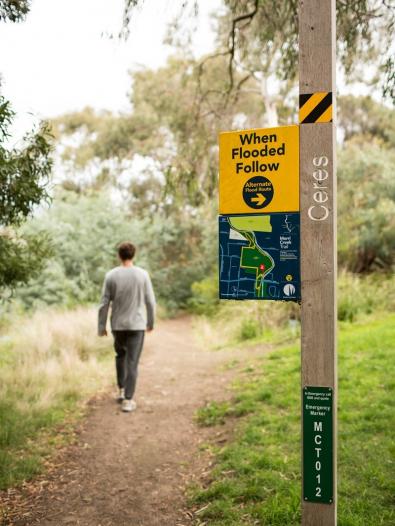We worked with researchers and the VICSES to pilot an innovative and effective approach to community flood education, which drew on and enhanced the more traditional VICSES methods of door knocking and outreach. Read the case study to learn more.
Sustainable Development Goals:
Goal 3: Good health and wellbeing
Goal 11: Sustainable cities and communities
Background
Floods have long been an inevitable part of life for Melburnians. With the impacts of climate change, it is highly likely that more Victorian homes will flood in the future.
There are currently an estimated 232,000 properties at risk of flooding in Melbourne, yet only 44 per cent of households in flood-prone areas are aware they are at risk – and preparedness for a flooding event is low.
To date, more conventional community education methods have had little effect on increasing awareness of flooding and the preparatory actions required.
Research focus
To address this issue, we commissioned the University of Melbourne's Brian Cook and his team of researchers to work with the Victorian State Emergency Services (VICSES) volunteers and the community in the flood-prone areas of the City of Whittlesea. The outcome was a community education program that drew on and enhanced the more traditional VICSES methods of door knocking and outreach.
Community Engagement for Disaster Risk Reduction (CEDRR) takes an innovative and effective approach to community education. The door-to-door engagement assesses residents’ preparedness for floods, while also asking residents to help by engaging with their friends, neighbours, and others who could benefit. The aim is to better understand community perceptions and actions, while acting as a prompt to residents to take action and help others in their community.
Melbourne University researchers and VICSES volunteers engaged with flood-prone residents over three visits:
- The first visit involved gathering data about current levels of flood awareness
- The second visit aimed to understand changes in activity after the first visit
- The third visit to understand what changes in activity took place after the second visit.
In each instance, VICSES got to know the community and hear their views, and could offer household-specific advice if asked.
Outcomes
Initial findings from this research show a significant number of households took action as a result of the pilot trial.
Additionally, the CEDRR approach pioneers a form of engagement that stimulates a ‘ripple effect’ in which the community takes ownership and leads the sharing of flood preparedness information.
As a result of the CEDRR pilot in the City of Whittlesea, we are looking at ways in which this approach can be incorporated into our overall flood preparedness program.
You may also like...
Delivering on the Sustainable Development Goals
This report outlines Melbourne Water's unwavering commitment to advancing sustainability through the United Nations Sustainable Development Goals (SDGs).




